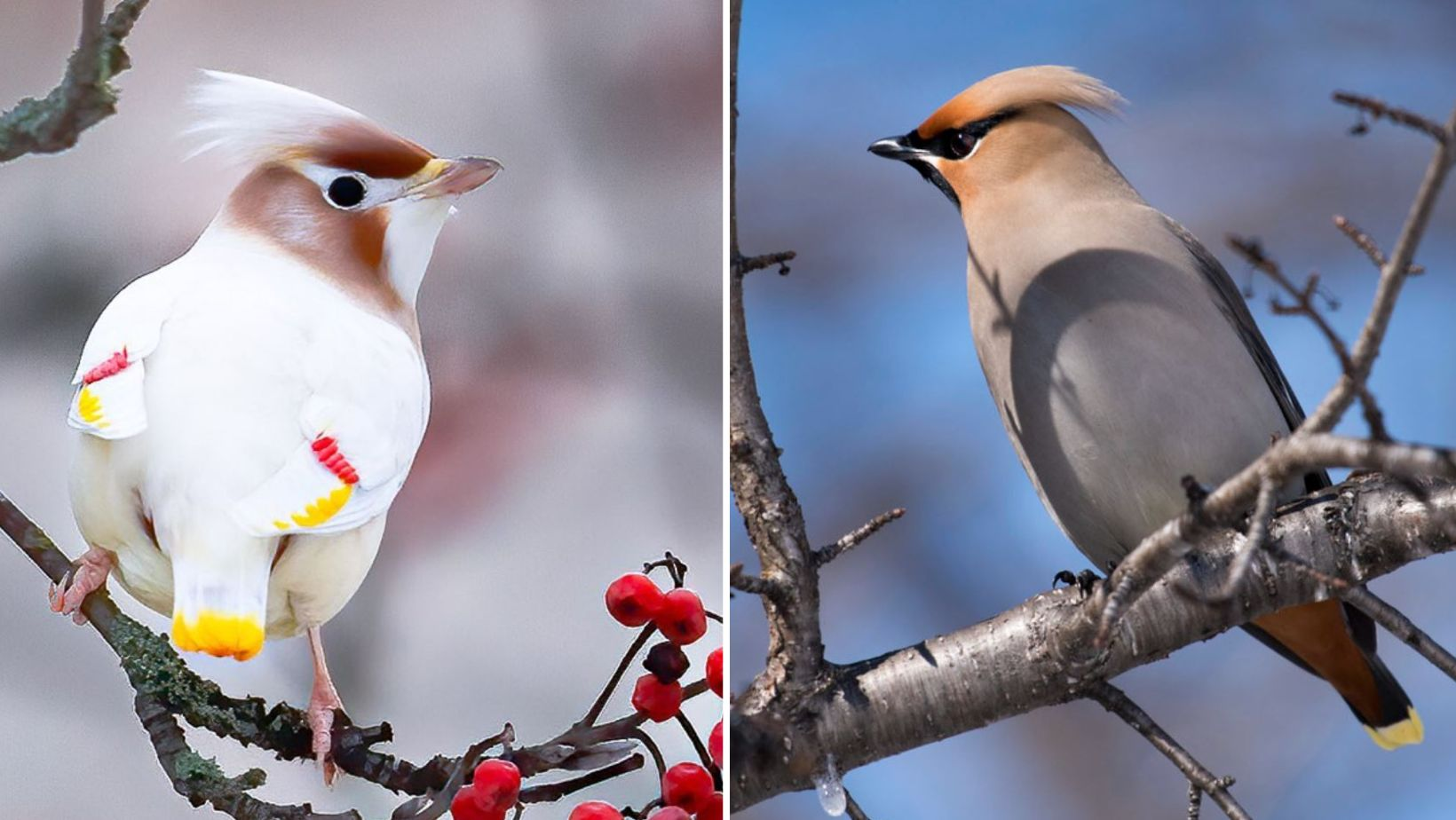¡LAS SALPICADURAS AMARILLAS Y ROJAS COLOCADAS ESTRATÉGICAMENTE DESTACAN ESPECTACULARMENTE CONTRA UN FONDO DE BLANCO MARFIL!

CONOCE EL WAXWING BOHEMIO
El Waxwing bohemio (Bombycilla garrulus) es un ave cuyo nombre proviene de su llamativo patrón de alas en las plumas de vuelo secundarias con puntas aplanadas que aparecen de color rojo brillante. Los machos tienen un plumaje de color gris parduzco con una rabadilla y partes inferiores de color gris pálido, y coberteras de la cola de color castaño oscuro anaranjado. Las plumas de vuelo de las alas son negruzcas con puntas primarias que muestran bordes amarillos en las redes externas. Las cubiertas primarias y las secundarias muestran amplias puntas blancas. Las secundarias también tienen puntas rojas largas, aplanadas y parecidas a la cera. la cola es negruzca, con una llamativa banda terminal amarilla brillante. la cabeza y la corona tienen un matiz de canela a rojizo cálido. Una máscara negra corre desde la base del pico a través del ojo y redondea hasta la parte posterior de la cabeza debajo de una cresta prominente que apunta hacia atrás. El mentón y la garganta son negros, el pico también es negro con una base pálida. los ojos son de color marrón oscuro y las piernas y los pies son de color gris oscuro a negro.
The female looks very similar to her male counterpart though she has a more narrow yellow terminal band.
Her throat is also less well-defined along the lower edge. In its leucistic form the red and yellow pop even more against pure white plumage.
These birds can be found inhabiting the northern forests of the Palearctic and North America.
The Bohemian Waxwing breeds in northern coniferous forests, mainly in open forested areas, or along forest edges and near rivers and areas where it can find dense growth or fruiting trees and bushes. During wintertime, it frequents various types of habitats with scattered trees and fruiting trees and bushes. It can be seen in gardens, farmland, roadsides, and deciduous forest edges.
This bird is mainly a fruit eater, but it also feeds on insects, especially during the breeding season. It will also take buds, flowers, tree sap, shoots and leaves, moss, and lichens. The diet is sometimes complemented by spiders and snails.
During the breeding season, a nest is usually built high in a pine tree but feeding opportunities determine the location ultimately chosen. Each bird or pair may have more than one nest in the same general area. The nests have an outer diameter of 15cm to 18cm and are lined with fine grass, moss, and down. On average, 4 to 6 eggs are laid within, the egg shells having a pale bluish color with a heavy sprinkling of blackish spots and some dark, irregular lines. Incubation is around 14 days and the young leave the nest about 13 to 15 days after hatching.
The Bohemian Waxwing is common with stable populations and has had some increase in recent years. This species is not currently considered threatened.
YOU CAN WATCH THIS BIRD RIGHT HERE IN THE VIDEO BELOW: